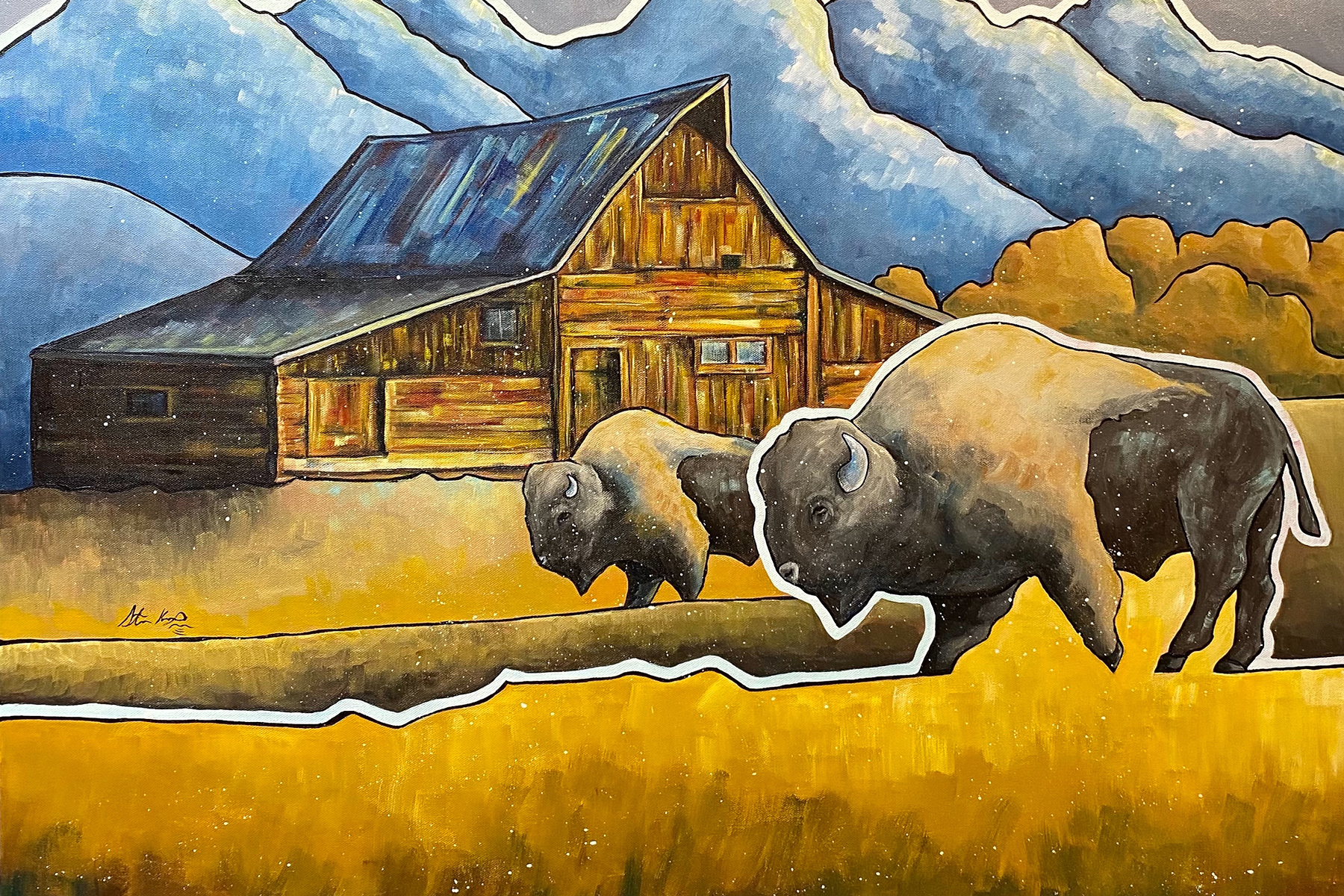Steve Knox is an artist, arts educator, and arts advocate from Cheyenne. He spoke with Nick Thornburg over the phone in March of 2021.
Nick Thornburg: Steve, you’ve had a pretty eventful year on top of what we’ve all experienced during the pandemic. You’ve been keeping busy and a lot of things have happened for you. Do you want to share what’s been going on?
Steve Knox: Yeah, sure. Very recently it’s been probably the most hectic, but throughout the pandemic it’s been pretty busy, and I made sure to stay busy and keep active in the arts. But just recently, about four weeks ago, my wife and I welcomed a little girl into our family. So, [I’ve had] a lack of sleep. Raising three boys and now a little girl [keeps me] super busy. On top of that I’ve been actively trying to keep up with my art and starting new projects and feature shows. So it’s been kinda crazy, but I was able to take some time off from my regular job, which is teaching elementary art. That’s been nice, to have some time at home and really be able to work through this.
[Also], back in January I won the Jackson Hole Still Works label competition. That entailed a trip to Jackson, some publicity with the Jackson Hole Still Works guys, and lots of trying to get my image out there—really just trying to keep up the momentum. That was a pretty fun experience, as you know, since you won a few years prior.
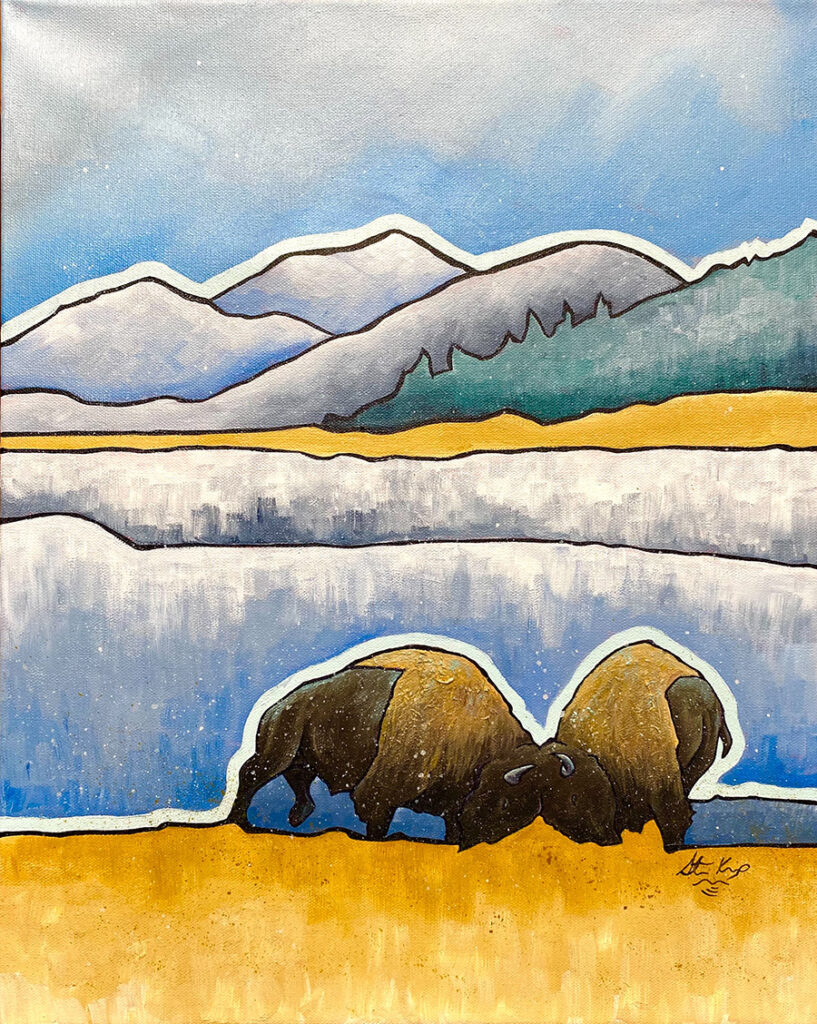
NT: Yeah. Well, a lot of congratulations are in order here. You’ve got a lot of great things going on. I imagine it’s been pretty crazy. Part of me doesn’t even know where to start. [laughs]
SK: [laughs] Yeah.
NT: Arts education, that’s a good place to begin. The field of education was kind of thrown into the wringer at the beginning of last year with the pandemic. From that angle, how have you been coping and working with your students and still trying to engage with them? What does that look like?
SK: Well, when it first began—when they first shut down the schools back in March we didn’t know what to expect. We didn’t know where to go. We didn’t have the training. We didn’t have the technology. So it was really just like one week we didn’t go back to school and they didn’t really give us any instructions, so we waited. Then I got to thinking, how am I going to teach children art virtually with a lot of my students coming from lower-income families that don’t have access to materials? Or don’t have access to technology? It really turned into this panic moment, and filled me with a bunch of anxiety. But in my school district everybody was feeling the same way. Everybody was just scrambling to get through. I think they really tried to make sure we weren’t over-pressuring the families of the students, but also that we weren’t doing the same thing to ourselves as teachers. So, I hate to say it, but the last couple months of my art class were almost a wash in my opinion. I sent a lot of assignments home, did Zoom meetings as classes, but really, I didn’t get a lot of responses. I didn’t get a lot of work returned. I really didn’t get very many students to come to my Zoom meetings. It was a bit of a wash, and as far as the education—in my opinion—it was a bit of a loss for the kids. But I’m so thankful we were able to start at the beginning of the school year in person—with accommodations with masks, and lots of cleaning and lots of reorganizing and social distancing. It’s really been pretty successful. And I’ll tell you what, the kids are absolutely thrilled to be back. Or they were. The honeymoon is kind of running short, but they definitely wanted to be there.
NT: I can imagine, after taking that break. So much of art education is about having that presence, right? You gotta get your hands dirty.
SK: Absolutely. Especially at an elementary age. That’s what I teach. Those kids, they need to be experimenting. They need to get messy with clay and paint and covered in pastel dust. That’s how they learn, in my opinion. Without access to those materials, without access to a teacher who has some knowledge of those materials, it’s pretty much impossible for them to get a good education out of it.
NT: Right. And this reminds me of what’s been going on—and I don’t know if you’ve seen what’s been going on with this—but online there’s been a lot of buzz around NFT art. Have you heard about this?
SK: I haven’t.
NT: Well, NFTs are made possible by blockchain technology, and basically what it means for artists is that a creator has the ability to sell one-of-a-kind digital artwork. This is unprecedented because digital art is so easy to reproduce. It has, up to this point, lacked the mechanism of scarcity which gives traditional art its value. But with NFTs, the technology allows artists to create a record of scarcity, which really hasn’t been done before. On top of that, the smart-contracts governing exchange allow artists to profit off any secondary sales of their work as well. So, it’s this very attractive technology, and many people are flocking to it because it’s being touted as a way to liberate artists from rent-seeking intermediaries and as a way for artists to continually profit off their intellectual property over the course of their lives and careers. There are people who are talking about it like it’s some new artistic revolution, something that will lift artists from all walks of life out of poverty. But one of the things I’m noticing— as someone who lives in rural Wyoming and understands the difficulties with access generally—is that many of the people now involved in the space are those who have already benefited from access to technology and other resources, historically—so it’s not clear to me that it’s the field-leveling movement that it claims to be. From where I’m standing it doesn’t appear to be opening up the art environment in the way many had hoped. Disparities that already exist—kind of like the lack of access you ran into with your students—still persist. And if people don’t have access to the tools, and they don’t have access to those who can teach them how to effectively use them, what difference is it going to make for them? Really, it doesn’t do anything for them, despite the fact they are the ones who could really benefit in a significant way from the technology’s adoption. Access still remains a significant problem. It’s really unfortunate.
I suppose all this might seem like a bit of a tangent, but what you were saying about art and access reminded me of that. You’ve been doing a lot of work as an arts advocate, not only trying to bring art to children but you’ve been trying to broaden the awareness and reach of regional art as well. Can you talk a little bit about the vision behind those efforts? Is it related to your having noticed disparities in the space?
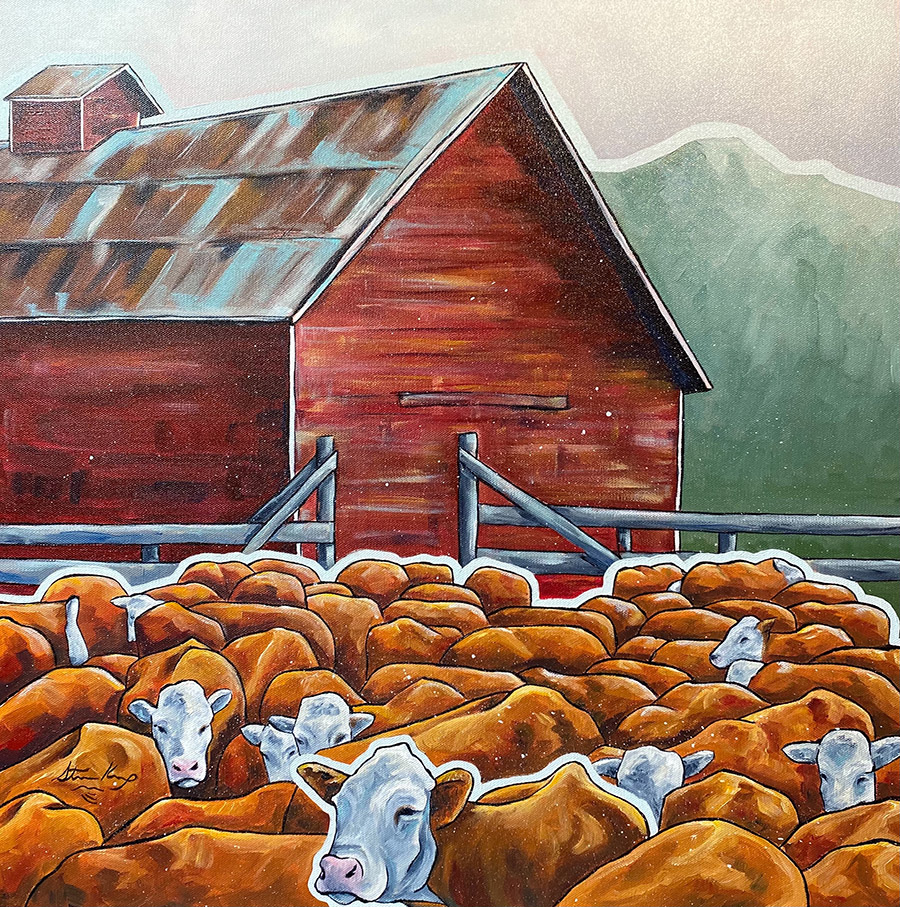
SK: I feel like Wyoming is such a unique place in that we have such talented, smart, creative people, but they’re fit into pockets. We have Casper, we have Cheyenne, we have Jackson, we have Lander, but they’re all a hundred miles away from each other, [and it can be] a really terrible winter drive to see another artist or visit a gallery. So a lot of this comes from this desire to show my work and connect with others and pull these pockets of Wyoming artists into [a group] that can interact freely without [distance becoming a problem.] Just like the way you and I met. If there wasn’t anybody to create this [exhibition opportunity], open to Wyoming artists regionally, we would never have met, probably.
And [my focus] isn’t just Wyoming, it’s in Cheyenne, [also]. Cheyenne has an art scene that is very fractured, and it needs some love and some care. It needs some support in a way that is going to bring the arts more to the mainstream, to let the people of Cheyenne know that we are here, that we are actively working, and we are here to make the world better and Cheyenne better. That’s kind of my driving force.
NT: I think that’s a really great way to think about it. Living in Wyoming can add a level of difficulty to a career in the arts because of its insularity. These arts pockets are unified insofar as they consist of artists who all live and practice in the state, but there isn’t as much of a structure to unify them in the way that other places have. I think that’s something that people tend to overlook, especially when they’re in the mix and they’re feeling competitive while developing their own careers. The fact that other areas, like the big cultural centers on the coasts, benefit from strong, already-established support mechanisms, is something many people tend to forget about. But those things are important. In order for one to do well—and this relates back to your featured article from a year or so ago—there has to be a strong community of support. A rising tide raises all ships, right? So, helping somebody else achieve what they’re trying to do can actually help you achieve what you want to do. I think this is a really great way to go about pursuing a career in the arts: helping the community, helping other people, and establishing a more cohesive regional presence that will benefit all involved.
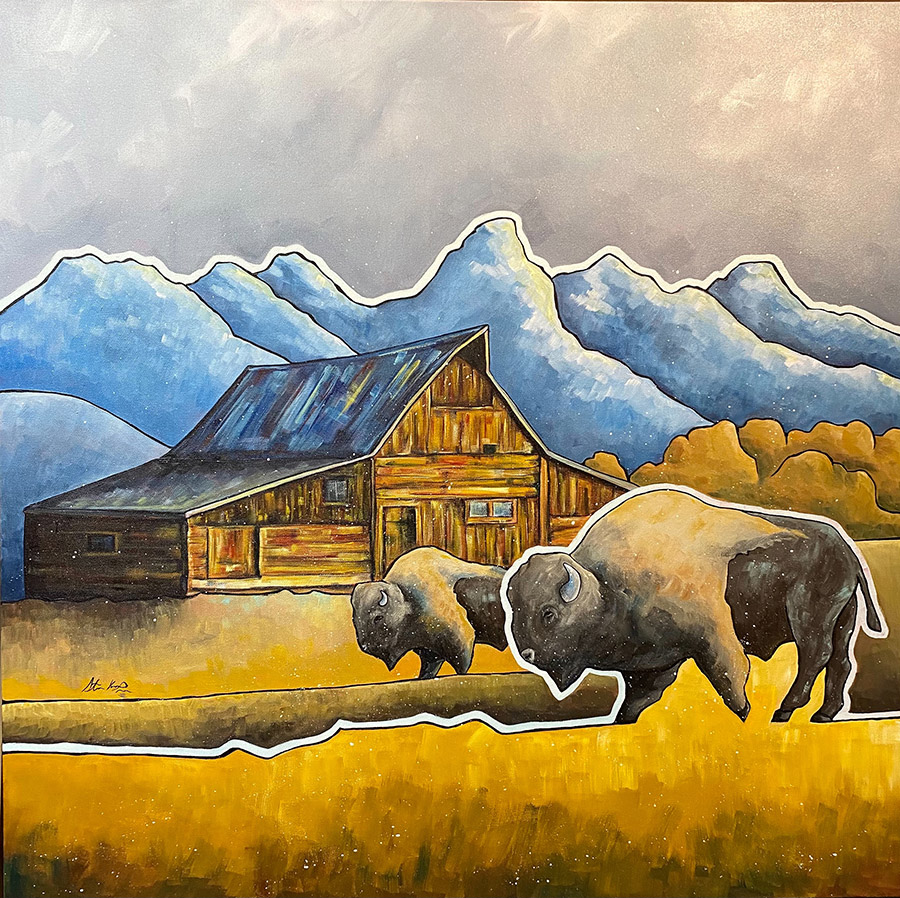
SK: Absolutely. And I use that proverb when I’m talking about the things I’m working on, as far as the advocacy I do in the arts, because it really rings true. One person helps another person who helps another person can become something where everybody is helping each other. Then it’s no longer about how I can become successful, but if we can be successful together.
NT: That’s one of the things I really appreciated about the Jackson Hole Still Works competition that you won this year. Congrats again on that.
SK: Thank you.
NT: The thing I enjoy about how that event is structured is how it has a layered effect. An individual artist could succeed but the program also helps to promote and support the wider arts community. I think that is really important, and it’s the kind of program I’d like to see more of overall. By design you get a wider impact within the region, and that’s great. How was your experience participating in that event?
SK: It’s been incredible. First of all, meeting that whole community has been awesome. The Still Works guys have been great, they’ve been super supportive. They blast it out on social media and do everything they can to promote the artists, which is great because I’ve done art shows and competitions where once you win or once the competition is over you’ll never hear from them again. It’s just done. So the fact that they promote me as part of a team is super flattering. They’ve been awesome. I’ve had commissions come out of the project, I’ve been on podcasts—which I’ve never done—I’ve had newspaper interviews. It’s really been great. There’s been a lot of outreach, and it’s humbling, too. Everybody’s so great about it.
NT: That’s great, and I think it speaks to another level of commitment, and a strength of the program’s design. It’s admirable, and I believe more people ought to take lessons from it. I’ve been in that same position you were talking about where you participate in a contest or an event and once you’ve gained entry, that’s the end of the line. In some cases, once your piece is up on the wall, that’s it—there doesn’t seem to be any additional support or cooperation between the different parties, which is such a lost opportunity. Like you were saying, the artist is part of the team. If the artist has already committed to participating and supporting an event with their work, why not bring them in a more cooperative manner and make them a part of that wider story, that wider effort? There is much more value in that kind of approach.
SK: Absolutely. The partnerships that [Jackson Hole Still Works] have created—I think when you did the competition it was with the Jackson Hole Art Association, they help artists locally in Jackson Hole–
NT: Yeah, that’s right.
SK: This year they partnered with the Wyoming Arts Council, which obviously is a huge asset to Wyoming artists. The relationships that Jackson Hole Still Works is creating by having this competition annually are incredible. When I went into the reception for the top eight [finalists], I wanted to connect with each of those people individually and make sure that they knew that whether they win or lose, or if I win or lose, that it didn’t really matter. I wanted to connect with them and work on making those gaps between artists smaller. So I made sure to continue an email conversation between all eight of us and it’s been pretty good. I’m excited. I think I’ve got a show lined up in Casper with the same model I used for the pop-up shows in Cheyenne, with at least one of the other artists. So, I’m pretty excited about that, and how those relationships are growing.
I love the relationship that you and I have built around this understanding that as artists we can work together to make things better and I really just want to keep that going. I think COVID really slowed us down as far as our momentum for getting the arts growing even more. I think Wyoming is on the brink of some really great things, state-wide and locally in every community. Once COVID restrictions start loosening up and people are feeling a little bit more safe about joining the world again, I want artists and makers and creatives and groups of people who want to help the arts—I want us to be ready to burst out and just go for it, to let others know that we really are one of those important groups of people. Because I really believe that we are. We are an essential part of our communities and our society.
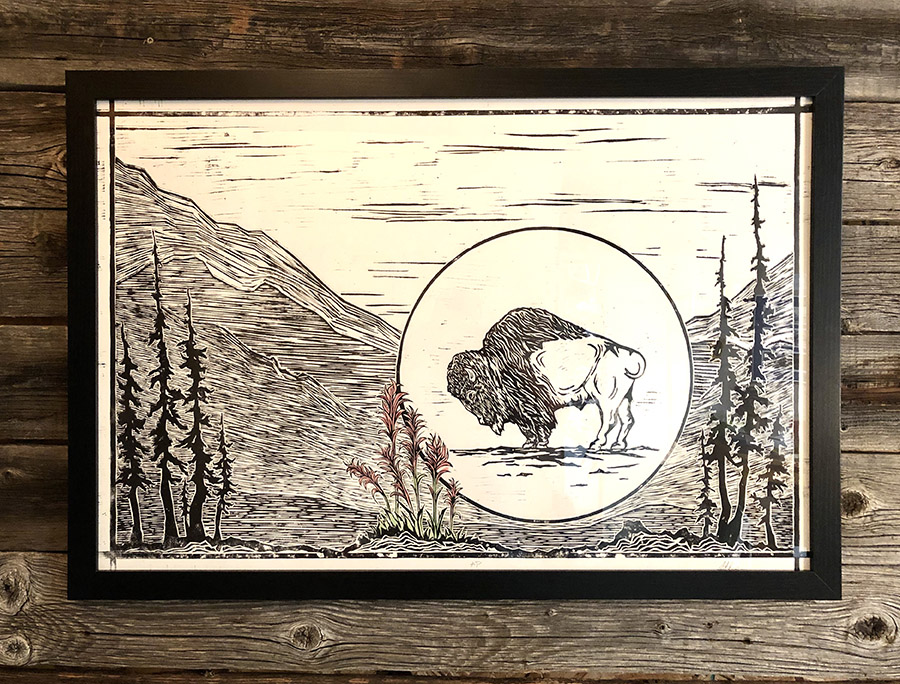
Steve’s work can be found in several galleries in and around Cheyenne, online on Facebook and Instagram, and at fineartbysteveknox.com.
Support Regional Arts Coverage!
The Featured Artist and Conversations series were conceived as a way to showcase the stories of artists and creative people residing in the regional West while contributing to a wider conversation about creativity and the world of art.
To ensure this work continues, please consider supporting it.
Your contribution provides vital assistance and serves to demonstrate your appreciation for the work regional artists and creative people do to keep our communities vibrant and full of imaginative light.
If you enjoyed this arts coverage, donate below to keep the content coming! Learn more about becoming a supporter.
Become a Patron Without Spending a Dime. Learn More Here.
To be featured in an upcoming Featured Artist article or Conversation—or to nominate someone —please Contact Me.
Nick Thornburg is a multidisciplinary artist and writer. Follow Nick and share the work on social media. Subscribe to his mailing list to keep up-to-date with upcoming features and other news.
Stay Creative.
